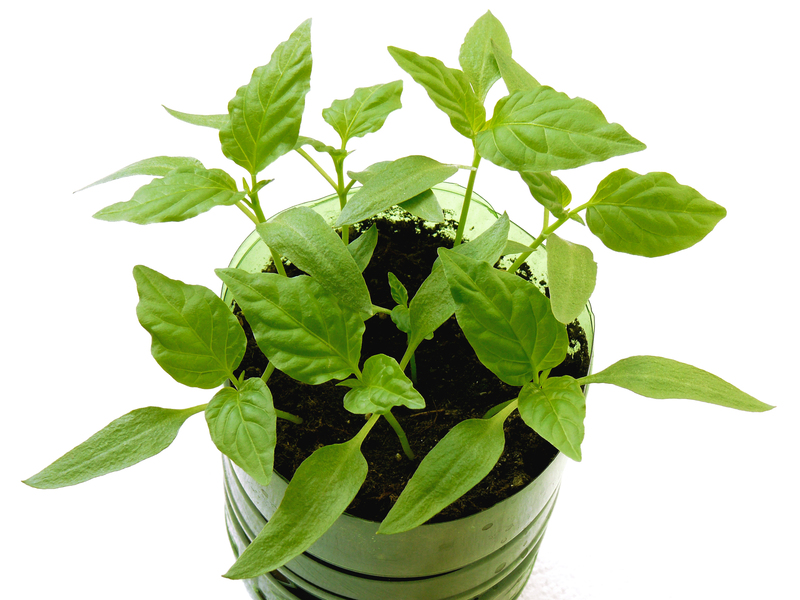Transforming PPE Waste Disposal Into an Easy Habit
The rapid global spread of contagious diseases, most notably COVID-19, has ignited an unprecedented surge in the usage of personal protective equipment (PPE). Masks, gloves, face shields, and disposable gowns have become part of daily life for millions. However, as the rates of PPE adoption soared, so did the volume of PPE waste--a challenge that demands immediate, innovative, and sustainable solutions. Transforming PPE waste disposal into an easy habit is not just an environmental imperative--it is a social responsibility that must be embraced by individuals, organizations, and governments alike.
Understanding the Scope of PPE Waste
The widespread dependency on PPE has contributed to mounting waste streams. The World Health Organization estimated that over 1.6 million tons of plastic PPE waste were generated globally every month during the height of the pandemic. This surge has put immense pressure on waste management systems and caused adverse environmental effects, especially when PPE is disposed of incorrectly.
Types of PPE and Their Environmental Impact
- Masks: Predominantly made from non-biodegradable plastics such as polypropylene. They can take hundreds of years to decompose.
- Gloves: Often composed of latex, nitrile, or vinyl. If not properly disposed, they can contribute to microplastic pollution and harm wildlife.
- Face Shields & Gowns: Designed for single-use, these items add to the landfill burden and are seldom recycled.
When PPE finds its way into landfills or, worse, natural environments, it threatens biodiversity, contaminates water systems, and introduces toxic substances into ecosystems. Therefore, developing easy PPE waste disposal habits is integral to minimizing these negative outcomes.

Barriers to Proper PPE Waste Disposal
- Lack of Awareness: Many individuals are uninformed about the correct way to dispose of used PPE.
- Inconvenience: Limited disposal bins or unclear signage make it challenging to adopt consistent disposal habits.
- Fear of Contamination: Concerns about the safe handling of contaminated PPE deter people from touching bins or segregating waste.
- Absence of Standardized Guidelines: Conflicting advice from authorities results in confusion and improper disposal.
Overcoming these challenges is essential for transforming PPE waste disposal into a simple and routine practice.
Why Transforming PPE Waste Disposal Habits Matters
The journey toward effective PPE waste management brings widespread benefits:
- Environmental Protection: Reduces landfill volume, plastic pollution, and the risk of wildlife ingestion or entanglement.
- Public Health: Prevents potential re-exposure to infectious agents via discarded PPE.
- Resource Efficiency: Supports recycling and sustainable disposal processes, preserving natural resources.
- Community Image: Clean streets and public spaces reflect positively on communities and motivate civic pride.
Below, we explore innovative strategies and practical steps to embed easy PPE waste disposal habits into everyday life.
Step-by-Step Guide: Making PPE Waste Disposal an Easy Habit
1. Increase Awareness and Education
Habit transformation starts with knowledge and awareness. Individuals and organizations must be informed about the environmental impact of PPE waste and the correct disposal methods. Consider the following:
- Organize public awareness campaigns on the effects of improper PPE disposal.
- Use visual guides, infographics, and workshops to teach proper sorting and disposal practices.
- Highlight real-life stories that connect PPE waste habits to visible environmental outcomes.
*When people understand the importance of their actions, they are more likely to adopt and sustain good habits.*
2. Improve Disposal Infrastructure
Accessible, well-marked disposal points are crucial for making PPE waste disposal second nature. Here are ways to improve infrastructure:
- Install dedicated PPE bins in public areas, office buildings, transportation hubs, and healthcare facilities.
- Clearly label PPE bins with large, bold signage and color coding to distinguish them from regular waste containers.
- Use touch-free or foot-operated lids to minimize contact and reduce the risk of contamination, allowing users to dispose of PPE confidently.
3. Integrate PPE Disposal into Daily Routines
Building habits hinges on routine. By aligning PPE disposal with daily activities, individuals are more likely to comply:
- Place PPE waste bins at entrances and exits of homes, schools, and workplaces.
- Develop a personal disposal checklist for leaving and returning home to ensure that used PPE is never left lying around.
- Assign responsibility for checking and emptying PPE bins regularly to designated staff or family members.
Remember: Consistency helps turn transforming PPE waste disposal into an easy daily habit.
4. Promote Safe Handling and Segregation
Safe handling of used PPE minimizes health risks and streamlines further waste processing:
- Wrap used masks and gloves in tissue or biodegradable material before disposal, reducing potential contamination.
- Use clear bags for PPE waste, facilitating quick identification and appropriate management by waste handlers.
- Educate about never disposing of PPE with recyclables or in public spaces.
5. Support and Adopt PPE Recycling Initiatives
Advancements in recycling technologies have opened doors to more sustainable PPE waste management:
- Support community programs that collect masks and gloves for recycling into energy or construction materials.
- Seek out drop-off points or mail-back programs for used PPE, offered by some non-profits and private companies.
- Explore innovations such as compostable or reusable PPE products to further reduce waste.
How Businesses and Institutions Can Foster PPE Waste Habits
Organizations, schools, and healthcare providers play a pivotal role in normalizing responsible PPE waste disposal practices. Here's how institutions can lead by example:
Implement Clear Policies and Training
- Develop and disseminate comprehensive PPE disposal protocols tailored for each workplace environment.
- Incorporate PPE waste management into onboarding and safety training for all staff members.
- Regularly review and update procedures in response to feedback and new guidelines.
Regular Communication and Recognition
- Use newsletters, posters, and meetings to reinforce the importance of proper PPE waste habits.
- Recognize and reward departments or individuals who consistently adhere to best practices.
- Solicit input from staff on ways to improve PPE waste disposal systems.
Partner With Environmental Organizations
- Collaborate with environmental NGOs to implement take-back and recycling programs.
- Participate in community clean-up and education events.
- Pursue certifications for responsible waste management as part of corporate social responsibility.
These efforts not only help in making PPE waste disposal easy and habitual for employees, but also transmit a public message of environmental stewardship.
Innovative Tools and Technologies for PPE Waste Disposal
Making PPE waste management easier has been accelerated by innovative solutions, including smart bins, tracking apps, and biodegradable PPE.
Smart Bins and IoT Integration
- Automated bins equipped with fill-level sensors notify teams when they need to be emptied, preventing overflow.
- Contactless bins with motion sensors further reduce the risk associated with handling contaminated PPE.
- Data logging from smart waste systems helps optimize placement and servicing of disposal units.
Apps and Digital Reminders
- Mobile apps can provide timed reminders to check and empty PPE waste bins in high-traffic areas.
- Gamification features motivate users to responsibly dispose of PPE and record their actions for points or rewards.
Biodegradable and Recyclable PPE Options
- Development of compostable masks and gloves reduces the environmental burden of single-use items.
- Emerging PPE recycling processes convert waste into usable products, such as road materials or energy.
Integrating these technologies paves the way for habitual, effortless PPE waste management.
Community Involvement: Making PPE Waste Disposal a Shared Responsibility
True transformation happens when communities adopt a collaborative approach:
- Neighborhood Campaigns: Organize local drives to collect PPE waste and distribute disposal bags.
- Public Art and Media: Use art installations and social media to highlight the journey of PPE from use to disposal.
- Educational Outreach: Engage youth and schools in PPE waste reduction projects, embedding habits from an early age.
When the entire community is involved, PPE waste disposal becomes an easy, shared habit.
Common Misconceptions About PPE Waste Disposal
- "Masks and gloves are biodegradable." - Most are made from plastics and require specialized disposal.
- "PPE can go in recycling bins." - Used PPE should never be mixed with recyclables, as it contaminates the recycling stream and poses infection risks.
- "One person can't make a difference." - Collective small efforts result in large-scale impact over time.
Frequently Asked Questions (FAQs)
What should I do if there are no PPE bins in my area?
If dedicated PPE waste bins are unavailable, place used PPE in a sealed bag before adding it to general waste. Advocate for the installation of dedicated bins in your community.
Can I reuse disposable PPE?
Most disposable PPE is designed for single use. Reusing it increases health risks and is not recommended unless specified by the manufacturer.
Is it safe to handle PPE waste at home?
Yes, with precautions--use gloves or a tissue to handle used PPE and wash hands immediately afterward. Always keep PPE waste out of reach of children and pets.

The Future: Designing Habits for a Sustainable Tomorrow
As we look forward, making PPE waste disposal simple and ingrained into daily routines is a challenge we can overcome together. Embracing new habits, technologies, and community action will turn today's environmental burden into tomorrow's sustainable solution.
- Stay informed about the latest disposal and recycling innovations.
- Encourage others to join you in safe, responsible PPE waste practices.
- Support policies and organizations that prioritize environmentally-responsible waste management.
By transforming PPE waste disposal into an easy habit, we safeguard our environment, our health, and set a resilient example for generations to come.
Conclusion: Every Action Counts
The journey of a single mask or glove doesn't end at disposal--its environmental impact continues for decades. Let's act now to break the cycle of waste and pollution. Together, we can make responsible PPE waste management effortless, habitual, and impactful. It's time for each of us to transform PPE waste disposal into an easy, everyday habit--for our planet, for our communities, and for a sustainable future.